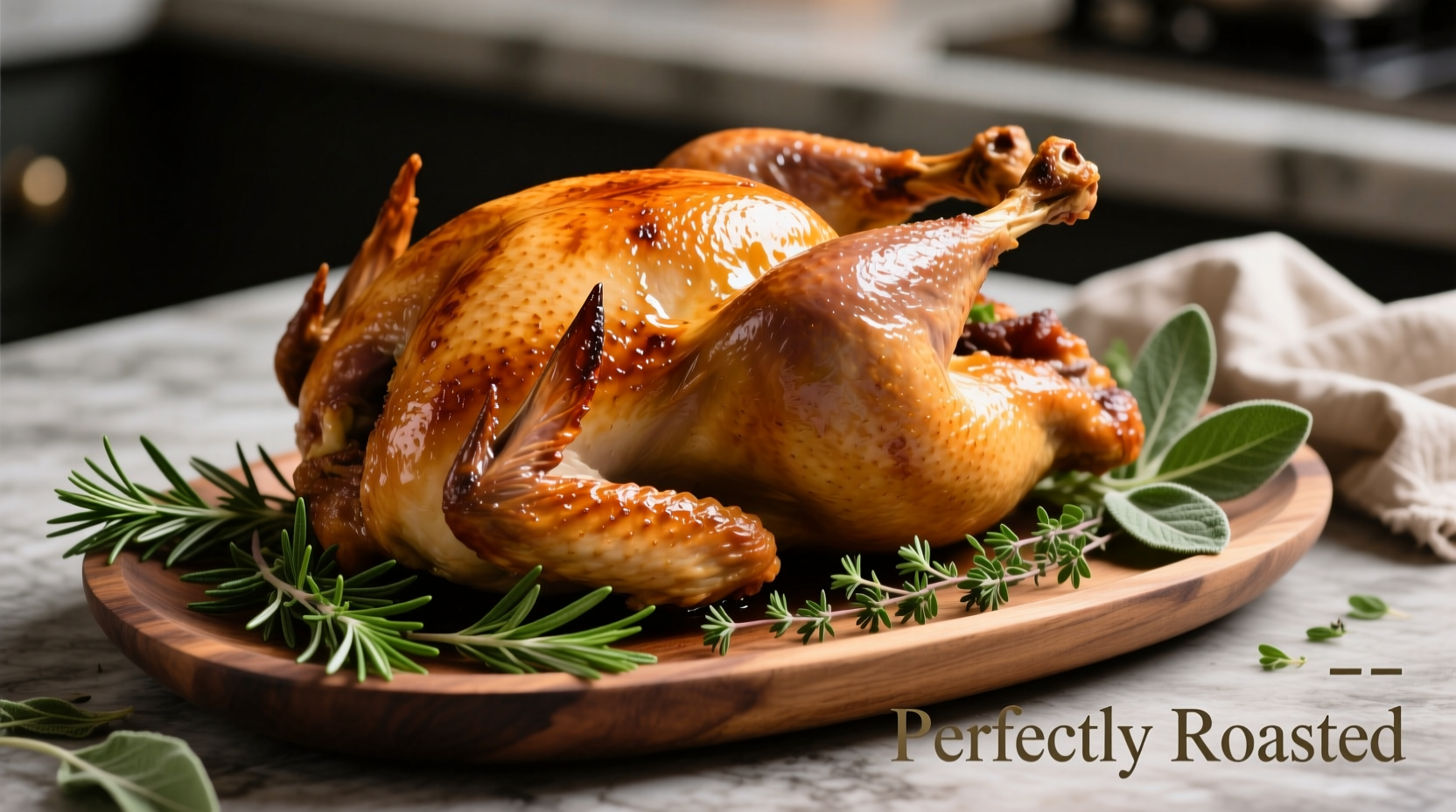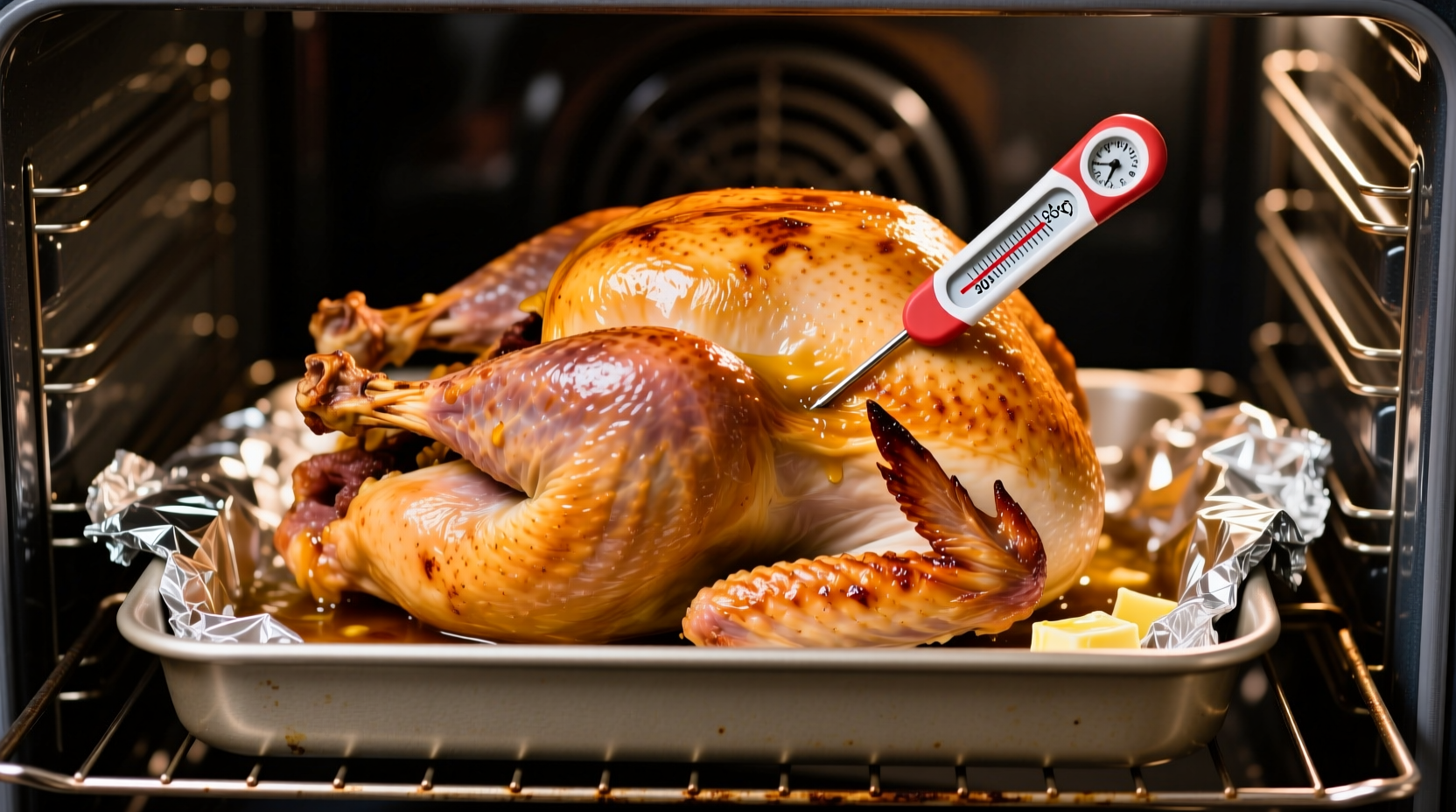A 12-14 pound turkey takes approximately 3 to 3.75 hours to cook at 350°F (177°C). The turkey is fully cooked when an instant-read thermometer registers 165°F (74°C) in the thickest parts of both the breast and thigh, with no pink meat remaining. Always allow 20-30 minutes of resting time before carving.
Getting your holiday centerpiece perfectly cooked can make or break your celebration. Many home cooks struggle with turkey timing, resulting in either dry, overcooked meat or dangerously undercooked poultry. As a culinary professional with decades of roasting experience, I've seen how precise timing at 350°F transforms this challenging protein into a juicy, flavorful centerpiece that impresses every time.
Understanding the Perfect Turkey Cooking Formula
While many variables affect cooking time, the foundational formula remains consistent: 13-15 minutes per pound for an unstuffed turkey at 350°F. This temperature strikes the ideal balance between efficient cooking and moisture retention. Higher temperatures risk drying out the breast meat before the dark meat reaches proper doneness, while lower temperatures prolong cooking time unnecessarily.
| Turkey Weight | Unstuffed Cooking Time | Stuffed Cooking Time |
|---|---|---|
| 8-10 lbs | 2 hours 15 min - 2 hours 45 min | 2 hours 45 min - 3 hours 15 min |
| 10-14 lbs | 2 hours 45 min - 3 hours 20 min | 3 hours 15 min - 4 hours |
| 14-18 lbs | 3 hours 20 min - 4 hours | 4 hours - 4 hours 30 min |
| 18-20 lbs | 4 hours - 4 hours 20 min | 4 hours 30 min - 4 hours 50 min |
| 20-24 lbs | 4 hours 20 min - 5 hours | 4 hours 50 min - 5 hours 20 min |
This comprehensive cooking time chart follows USDA Food Safety and Inspection Service guidelines, which emphasize that time alone shouldn't determine doneness. The USDA recommends verifying internal temperature regardless of cooking time.
Key Factors That Impact Your Turkey's Cooking Time
Several critical variables affect how long your turkey needs in the oven, making simple time calculations insufficient for perfect results:
Stuffed vs. Unstuffed Turkey Considerations
A stuffed turkey requires approximately 30-45 minutes additional cooking time compared to an unstuffed bird. The USDA Food Safety and Inspection Service advises against stuffing turkeys in advance due to food safety concerns. If you choose to stuff your turkey, ensure the stuffing reaches 165°F (74°C) as well.
Thawing Status Matters Significantly
Frozen or partially frozen turkeys dramatically increase cooking time. The University of Minnesota Extension recommends allowing 24 hours of refrigerator thawing time for every 4-5 pounds of turkey. A fully thawed turkey cooks more evenly and predictably.
Oven Accuracy and Placement
Most home ovens have temperature variations of 25-50°F. Using an independent oven thermometer ensures accuracy. Position your turkey in the center of the oven with proper air circulation - avoid overcrowding the oven with other dishes during critical cooking phases.

The Critical Temperature Verification Process
Time estimates provide a helpful framework, but temperature verification is non-negotiable for food safety and quality:
- Use a reliable instant-read thermometer - digital thermometers provide the most accurate readings
- Check multiple locations - breast, thigh, and wing joint
- Target 165°F (74°C) in all areas as recommended by the USDA
- Insert thermometer correctly - into the thickest part without touching bone
Many professional chefs pull the turkey at 155-160°F because of carryover cooking during the essential 20-30 minute resting period. This prevents overcooking while still achieving safe temperatures.
Step-by-Step Cooking Timeline at 350°F
Follow this professional approach for consistently perfect results:
- Preparation (1 hour before cooking): Pat turkey completely dry, season, and bring to room temperature
- Oven setup: Preheat to 350°F with oven thermometer in place
- Initial cooking phase (first 60 minutes): Roast uncovered to promote browning
- Middle phase: Reduce heat if browning too quickly; rotate pan for even cooking
- Final phase (last 30 minutes): Monitor temperature every 15 minutes
- Resting period: Tent loosely with foil for 20-30 minutes before carving
Troubleshooting Common Turkey Cooking Issues
Even with careful planning, challenges arise. Here's how to address them:
Turkey Cooking Too Slowly
If your turkey isn't progressing toward target temperature:
- Verify oven temperature with independent thermometer
- Ensure turkey isn't positioned too close to oven walls
- Consider using a convection setting if available (reducing time by 25%)
Preventing Dry Breast Meat
The breast cooks faster than dark meat. To maintain moisture:
- Shield breast with foil during the first half of cooking
- Apply butter or oil under the skin before roasting
- Consider spatchcocking (butterflying) the turkey for more even cooking
Essential Food Safety Considerations
Proper turkey cooking isn't just about quality—it's critical for safety. According to FoodSafety.gov, undercooked poultry is a leading cause of foodborne illness during holiday seasons. Follow these safety protocols:
- Never partially cook and finish later
- Refrigerate leftovers within 2 hours of cooking
- Store leftovers in shallow containers for rapid cooling
- Reheat to 165°F (74°C) before serving
Advanced Techniques for Perfect Results
For those seeking restaurant-quality results, consider these professional methods:
- Dry brining: Salt the turkey 2-3 days in advance for enhanced moisture retention
- Temperature-controlled cooking: Start at higher heat (425°F) for 30 minutes, then reduce to 325°F
- Butterflying: Spatchcocking reduces cooking time by 25-30% and promotes even doneness
Remember that carryover cooking continues for 5-10°F during resting. Pulling your turkey at 155-160°F ensures perfect doneness at 165°F after resting—without drying out the delicate breast meat.











 浙公网安备
33010002000092号
浙公网安备
33010002000092号 浙B2-20120091-4
浙B2-20120091-4